In your average commercial gym, you have a wide range of equipment to choose from to move toward your fitness goals. From barbells to treadmills — and even saunas — there’s going to be something for almost everybody. But if you’re aiming to increase strength to the max, you might have heard whispers about the dangers of the treadmill.
“It’ll eat away at your muscles,” your gym friends swear. But in the battle of cardio versus strength training, getting to the science of the matter will only improve your program — no matter what your goals are.
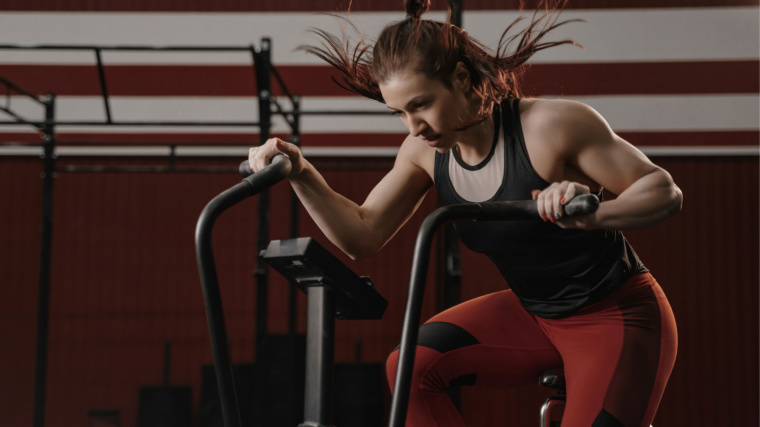
If you’re a strength athlete aiming to build muscle, you might dart right past the rowing machines, treadmills, and ellipticals. But do you really need to avoid cardio to maintain muscle mass? And if you’re a runner, will gaining muscle make you slower? Here’s the science behind integrating cardio and strength training into your program.
- Key Differences
- Key Similarities
- What Is Cardio?
- Benefits of Cardio
- Different Types of Cardio
- Common Cardio Machines
- What Is Strength Training?
- The Benefits of Strength Training
- How to Strength Train
- Common Strength Training Exercises
- Frequently Asked Questions
Editor’s Note: The content on BarBend is meant to be informative in nature, but it should not be taken as medical advice. When starting a new training regimen and/or diet, it is always a good idea to consult with a trusted medical professional. We are not a medical resource. The opinions and articles on this site are not intended for use as diagnosis, prevention, and/or treatment of health problems. They are not substitutes for consulting a qualified medical professional.
Key Differences
Cardiovascular exercise and strength training have some clear and obvious differences. There is a unique intensity of loading and duration for each training type. The most common movements are also going to be different.
Intensity
Strength training intensity is often prescribed using a percentage of your one-repetition maximum (1RM) of a given exercise. Your 1RM is the maximum amount of weight you’re able to lift for one rep — say, for example, with a back squat or deadlift. Strength training tends to use intensity levels prescribed as a higher percentage of your 1RM, often landing around 80 percent or higher. (1)
Cardio workouts don’t track or prescribe 1RMs. Instead, they focus on a percentage of your maximal heart rate. Depending on the goal of your cardio session, higher or lower percentages of your heart rate maximum are prescribed for a specific amount of time. (2)
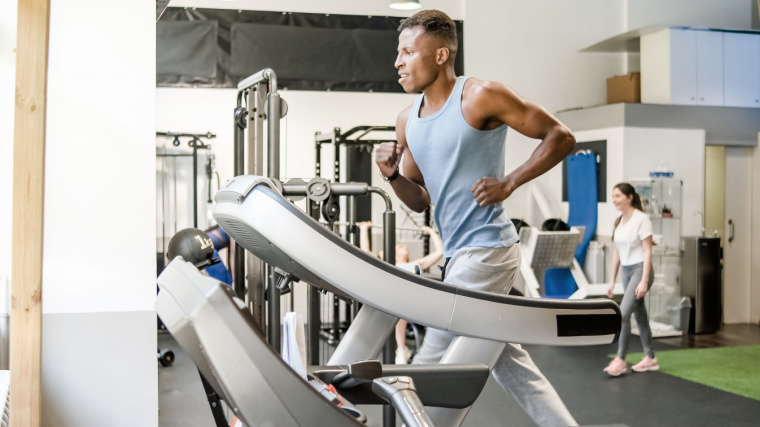
[Read More: 5 At-Home Workouts for Strength, Muscle Growth, Power, and More]
This will impact your speed in a similar way that the percentage of your 1RM will impact the amount of weight you put on the bar. The higher your percentage in either case, the heavier you’ll lift or the faster you’ll run (respectively). But, these are still vastly different approaches because one (1RM) is about the weight on the bar and the other (heart rate) is about your body.
Duration
Strength training sets and total session length is variable. A single set of an exercise — say, a bench press or snatch — usually only lasts between two to 30 seconds. The total time allocated for an entire workout, however, is much longer. To account for the combined time of rest periods and actually lifting weights, a strength training session may last between 45 to 90 minutes.
Cardio sessions are often a lot more compact than the average strength training workout. While cardio training takes many forms (from sprint intervals to low-intensity walking), 20 to 30 minutes of continuous activity is a good rule of thumb. While there are rest periods with strength training, once the ball starts rolling with cardio, it keeps rolling for the entire session.
Movement Patterns
Strength training programs can target any muscle group you’re aiming for. Typically, maximal strength exercises use implements such as the barbell or dumbbell, which are heavily loaded, and include multiple muscle groups. Smaller muscle groups normally trail afterward and are completed with relatively lighter loads.
Regardless of your targeted muscle group, you’ll likely be hinging, squatting, pushing, pulling, and rotating during your strength training exercise routine. Your goal is often to build stronger muscles, lean muscle mass, or to alter your body weight.

[Read More: The Best Online Workout Programs For Coaching, Cardio, Value, And More]
Cardio training targets large, full-body patterns as well. But unlike strength training, they are rhythmic in nature. They often emphasize the lower body to tax your heart and lungs the most.
Movement patterns such as walking, jogging, running, stair climbing, rowing, or cycling are staple movement patterns in cardio training. All recruit a huge amount of muscle at a lower level of resistance to allow you to continuously train for the prescribed duration of time.
Key Similarities
On the surface, cardio and strength training seem like distinct types of exercise. However, they actually have many similarities. Heart rate elevation, muscular contraction, and energy system usage are all commonalities between cardio and strength training.
Heart Rate
Both cardio and strength training will elevate your heart rate. As you perform a high-intensity set of resistance training — from push-ups to clean & jerks — your veins and arteries are compressed by your contracting muscles.
This makes it harder for blood to flow to the active muscles, and after your set (or even during it), you’ll likely feel your heart racing to compensate. As your workout progresses, you’ll get a dose of heart rate spikes throughout the session. (3)
The name of the game during cardio training is to increase your heart rate. Depending on which type of training you choose, cardio sessions have the ability to repeatedly spike your heart rate from sprint-style sessions. On the other hand, cardio within a lower to moderate intensity keeps your heart rate elevated to a modest level for a much longer duration.
Muscle Contractions
In order to have your muscles adapt to exercise (grow, get stronger, or gain endurance), they must contract. With lifting weights, the resistance you use forces you to contract at a higher intensity than during low-intensity steady-state cardio (LISS). Without an intense muscle contraction on the weight bench, you can’t hoist those kettlebells.
While performing LISS cardio — where you’ll sustain a low-intensity effort for upwards of 30 minutes, rather than a sprint workout — your body is going through lower-intensity rhythmic motions. The amount of force you need to generate is much lower, but you’ll still be contracting your muscles to keep moving.

These contractions direct blood flow and oxygen to the area in order to keep moving. On top of that, perhaps the most important muscle of your body (the heart) is responsible for pumping the blood you’ll need for all other contractions throughout your body. Doing this for an extended period of time will help get you the cardiovascular health benefits you might be seeking.
Energy Systems
Energy systems in your body are what provide your muscles the ability to “go.” Each contraction requires energy, and exercise intensity during both types of workouts determines which of your energy systems are utilized most often.
The phosphagen system is a quick and readily available energy source. It provides primary energy for maximum intensity for efforts usually lasting less than 10 seconds. The average strength training set and high-intensity cardio sprint session use the phosphagen system. (4)
The glycolytic system (sometimes known as the lactic acid system) provides energy for high-effort exercise lasting between about 30 seconds to two minutes. It produces the classical muscle burn you feel during higher repetition sets of weight training or longer sprints of about 30 seconds to a minute in length. (4)
The oxidative system (or aerobic system) is last on the list. The oxidative system kicks into primary gear when you’re going to be continuously moving for longer than a few minutes. Lower-intensity cardio like walking and light cycling with lots of continuous movement primarily uses the oxidative system. (4)
Effort
While many strength athletes use a percentage of their one-rep max to determine how much they should be lifting on any given day, they can also use their RPE. This stands for rating of perceived exertion.
Using an RPE scale means that you’ll judge how much effort you’re putting into a set based on how your body is feeling (with one being the easiest and 10 being the absolute hardest you can go).
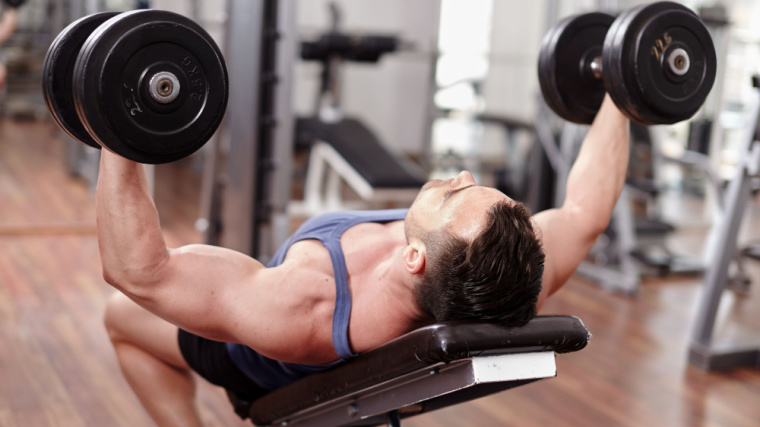
With cardio exercise, you may also use RPE to determine how hard you should be pushing. In weight training, your RPE will impact how much weight you put on the barbell and how many reps you do. With aerobic activity, your RPE will inform your running pace, cadence, or length of a given effort.
Becoming familiar with how to gauge your RPE on the lifting platform can help assess your effort on the running track, as well. It works the other way around, too. In this way, your exercise program can benefit from learning about your body in both training approaches.
What Is Cardio?
Cardio (or cardiovascular training) is typically understood as a continuous exercise that uses the body to train the heart.
Full-body, lower-intensity, rhythmic motions are repeated for bouts of exercise that last anywhere from 10 minutes to an hour or more. On the other hand, it’s also possible to train your cardiovascular system with a shorter-duration, higher-intensity, sprint-style workout or fartlek training.
Though it won’t show up in your bodybuilding poses, the heart is a muscle and it gains strength and efficiency by being challenged. Its job is to pump blood throughout your body, so the only way to truly train it is by increasing the demand for blood.

Your best bet in doing this is by contracting a huge amount of muscle mass for progressively more challenging intensities or durations.
Low-impact exercises or machines such as walking, cycling, or rowing are popular choices for cardio training because of their relative accessibility. More straightforward forms of exercise that don’t cause a ton of soreness or long-term fatigue are often the best options for cardio training.
Benefits of Cardio
Cardio training has a ton of benefits for your overall heart health and is an easier way than lifting to track your calorie burn if that’s important for you. The more you do it, you’ll also note significant improvements in your cardiovascular performance.
Improved Heart Health
Regular cardio training is a great way to improve a number of overall heart health markers. It’s been shown to positively impact blood pressure, making it a strong option to help manage hypertension. (5)
It can also help to manage many risk factors for cardiovascular disease (either alone or in combination with resistance training). (6) Not only that, but all-cause mortality risk has also been shown to be reduced in populations undergoing regular cardiovascular fitness training. (7)
Calorie Burn
If you’re actively thinking about your body composition and are bulking, cutting, or just simply maintaining muscle mass, managing your calorie balance can be important for your results. While you certainly burn calories during any kind of exercise, cardiovascular training makes it a lot easier to account for.
Keep in mind that all calorie calculations on cardio machines are rough estimates. Still, you’ll have an easier time knowing how many calories you’re burning per day performing cardio. Where strength training might have a more prolonged impact on your metabolism while you recover, cardio training gives you a burst of calorie burn that is much easier to track.
Cardiovascular Performance
Cardiovascular performance is another major benefit of regularly throwing in cardio sessions. Not only does your performance within the exercises themselves improve, but you’ll likely see some signs of carryover into activities of daily living. Hauling the groceries up your four-flight walk-up may get a lot easier when you train cardio a few times a week.
Regular cardio training helps to improve maximum cardiac output (the amount of blood you can pump in a given time). This is because your heart’s contraction strength, your overall blood volume, and even the size of the heart itself can improve with training. (8)
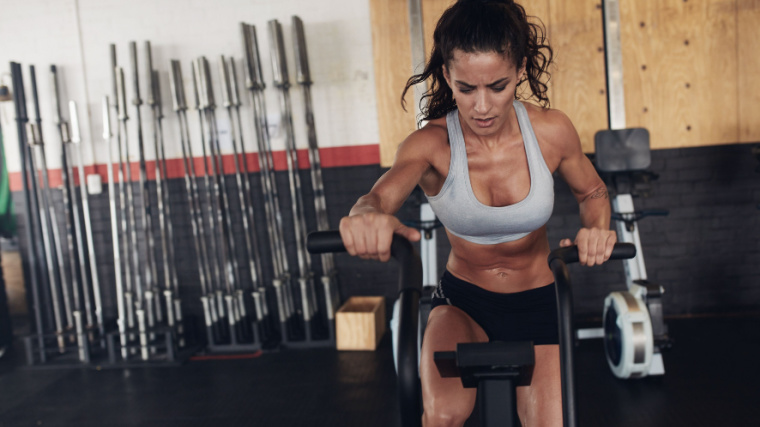
Along with some synergistic benefits down the line (in your veins, arteries, and muscles), you may well experience some very encouraging performance benefits in no time. (8)
Different Types of Cardio
You’ll have quite a few options to choose from for your cardio training. Here are some of the most popular options.
Low-Intensity Steady State
LISS training takes a slow-and-steady approach. You’ll pace yourself to operate at a much lower percentage of your maximum heart rate than other training styles. But, LISS workouts are generally longer than other types of training.
A LISS session may last anywhere between 30 minutes to an hour or more and is often described as “conversational” cardio. Your pacing is on the money if you’re able to uphold a conversation while doing it. (4)
Tempo Training
Tempo training kicks things up a notch. You’ll be training for around 20 to 30 minutes on average, but your heart rate is higher than it is during low-intensity work. The aim here is to approach your lactate threshold by the end of the session. This means that your heart and lungs struggle to meet the demands of your pace and you naturally run out of gas. (4)
The more tempo training you strategically scaffold into your program, the more you may be able to increase your lactate threshold. (4) This translates into being able to work harder for longer periods, both in the weight room and on the track.
High-Intensity Interval Training
High-intensity interval training (or HIIT) is another popular cardio training style. HIIT requires you to perform extremely short bursts of near-maximal effort to crank your heart rate. It is followed by a brief period of slower pacing or complete rest to help recover before going for another hard interval.
Altogether, HIIT can be the most intense style of cardiovascular training and normally only lasts between five to 10 rounds. (4)
Common Cardio Machines
Some of the most common and accessible cardio machines are going to be the treadmill, rower, stairmill, and stationary bike. Whether you’re in your home gym or your local box, these machines are great choices to up your cardio game.
Treadmill
The treadmill is a classic piece of fitness equipment. It gives you access to the full complement of training intensities. From walking at a lower intensity, jogging at a moderate pace, or even sprinting in intense intervals, the treadmill has you covered.
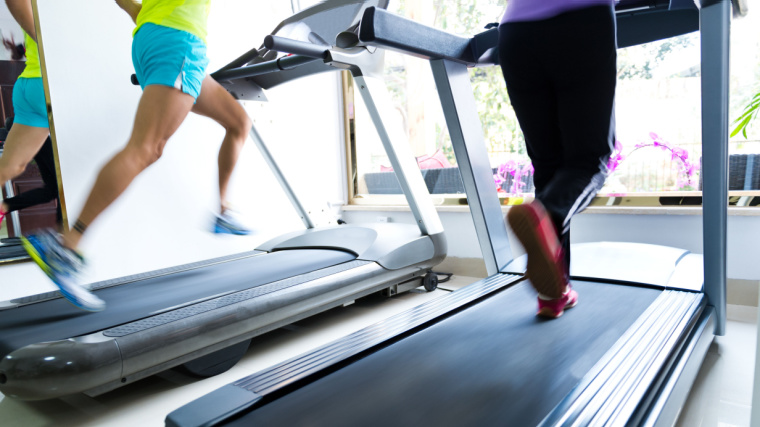
You’ll also have the option to adjust the incline to simulate outdoor terrain or hiking. With all those options, it’s tough to beat out a treadmill for a spot in your garage gym.
Rower
The rower is another common piece of cardio equipment you’ll find almost everywhere. It’s a lightweight, small-footprint machine that targets your entire body.
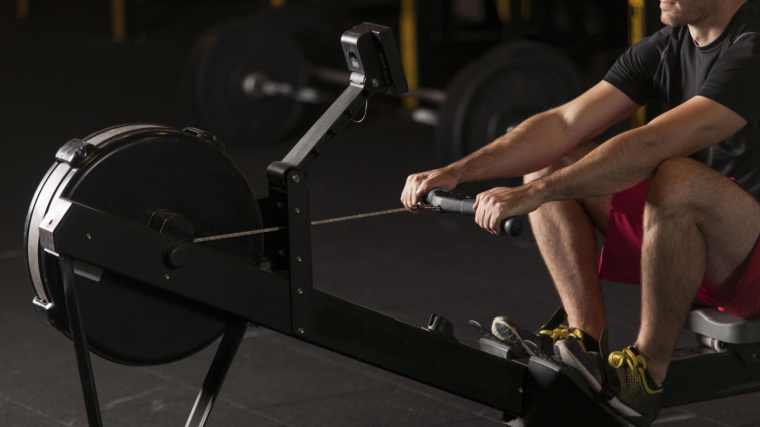
The movement is completely different from most other cardio machine options, incorporating your upper body and lower body significantly at the same time. Your legs get roasted by the initial push and your upper body is constantly required to stay braced and finish each stroke.
Stair Climber
Great for getting you out of breath quickly, the stair climber is another popular choice. As you probably know if you navigate urban environments, climbing stairs — even for a brief period — gets your heart rate going and your legs burning.
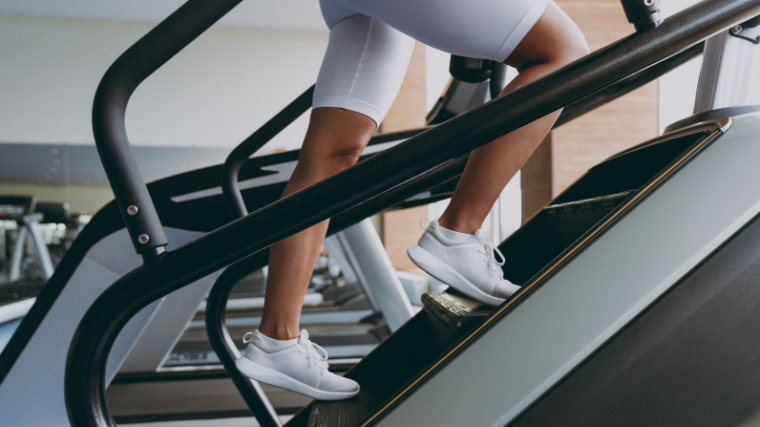
You don’t have to do any fancy kickbacks or sideways walking to be effective. Just lock in on your stair climber for a good 10 to 30 minutes and you’ll be cooked.
Stationary Bicycle
The stationary bicycle is probably one of the most scalable cardio tools available. You can opt for full spin classes or a recumbent bicycle capable of accommodating multiple body types and fitness levels. Either way, it has a minimal impact on your joints, especially compared to running or using a stair machine.
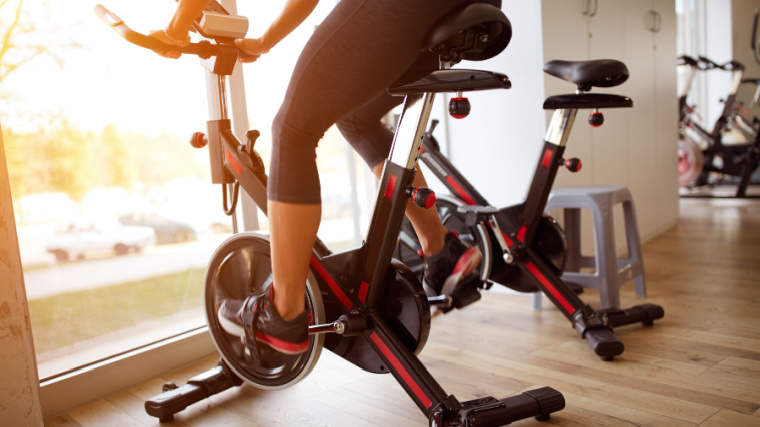
Exercise bikes also let you alter the resistance on the pedals to build up some baseline leg strength before cranking it up and going full send.
What Is Strength Training?
In the context of the gym, strength refers to your ability to recruit, coordinate, and produce as much force as possible with your muscles.
Your top end of strength is typically described as your one-repetition maximum and strength training is the programming you’d use to build it. This type of training typically focuses on a few key skill-based exercises (for example, the squat and deadlift).
Strength training uses higher intensity and lower repetition ranges in order to produce the best results. This is because your muscle mass is recruited based on necessity: Without higher loads, you won’t see the coordination or stimulation necessary for significant progress. (9)

Training with higher intensity (which means heavier weights) is key to building strength. (10) It’s also helpful to build muscle along the way to have more to strengthen as you go.
Therefore, strength training often prioritizes total-body, skill-based exercises. You’ll train these main lifts at a higher percentage of your 1RM. The rest of your workout will involve exercises that complement your main lifts — for example, performing overhead triceps extensions on bench press day.
The Benefits of Strength Training
Strength training clearly helps improve your full body strength, but it also benefits your bone density and builds muscle along the way.
Improved Strength
Growing stronger might be the most obvious benefit of strength training. Aside from the exercises you select to train specifically for strength, you also see a ton of great full-body benefits.
For example, while a squat might seem like a leg exercise, the involvement of your core and back transfers to other exercises down the road. If you want to get significantly stronger, you’ll need to focus on hoisting heavy loads, whether you’re choosing bodyweight exercises or barbell moves.
Increased Muscle Mass
Gaining muscle mass may be one of the major reasons you signed up for your local gym. Even though barbell exercises emphasize lifting the heaviest loads possible, muscle size and strength are very intimately linked.

[Read More: The Ultimate 10-Week Powerbuilding Workout Routine for Mass and Strength]
You can grow your muscles with a wide variety of loading and repetition ranges. Although more moderate loading and repetition ranges are popular and often prescribed for muscle gain, heavier loads get the job done, too. (10)
Support Bone Density
Improved bone density is one of the less obvious benefits of strength training. Your bones respond well to bearing load — that’s the major way you “train” them.
Similar to your muscles, training over the course of your life helps to build stronger bones. As your major full-body movement patterns gain strength (and the weight on the bar goes up), your skeleton also sees benefits along the way. (11)
How to Strength Train
There are a few distinct programming factors to think about when you’re building your strength training program. Your workout split, exercise selection, sets and reps, and methods of progression are top of mind here.
Workout Split
Your workout split is how you arrange your training sessions across a block of time (usually a week). There are many ways to split your workouts. You can choose to separate exercises by muscle group. You might also choose to do a push-pull-legs split, which involves a day of pushing, a day of pulling, and a day of focusing on your legs.
Another option is an upper-lower split, where you’ll alternate between working on your upper body and lower body across respective days. For each of these splits, you’ll select specific main lifts and supplemental accessory exercises to get you toward your goals — whether you’re aiming to lose body fat, spike your metabolic rate, gain muscle, or get stronger.
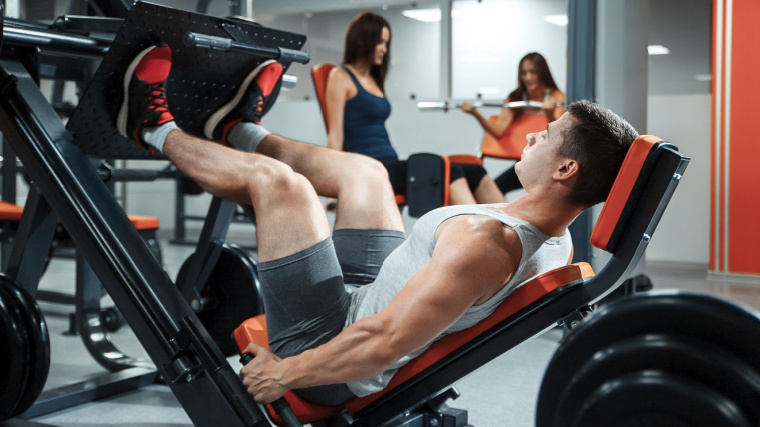
[Read More: Get Freakishly Strong With the 5×5 Workout Program]
Regardless of your choice, strive to leave a day off in between training sessions that cover similar movements and muscle groups to allow for adequate recovery.
Exercise Selection
Very often, exercise selection focuses on big, full-body compound movements. Exercises such as squats, hinges, presses, and rows are great examples. This helps ensure that you’re hitting most muscle groups and fundamental movement patterns. You’ll also expend more energy on these big lifts. Then, select the appropriate accessory lifts.
Select your exercises according to your goals and ability levels. For example, if you’re new to using barbells, learn kettlebell deadlifts before tackling barbell deadlifts. And if your main goal is to improve your strength with thrusters, you’ll want to train that movement along with accessory moves that directly aid in its development (like the front squat and push press).
Sets and Reps
The main structure of a lifting workout typically involves a certain number of repetitions or reps packaged into a few different sets (a cluster of repetitions completed without a break).
For your main exercises of the day (the major compound exercises), you’ll often use lower repetition counts with heavier weights. Especially if your main goal is building strength, this often falls in the ballpark of two to five sets of three to five repetitions. You may also go to an even lower rep count with higher weight, but often only when you’re peaking or testing a max lift.
Once you’re onto the remainder of your workout, hitting supplemental accessory exercises involves a wider range of sets and reps. Anything from two to four sets of eight to 15 repetitions or more are commonly used when you’re training odds and ends or looking to gain muscle mass.
Progression
Progressing strength training benefits from using a periodized program. Periodization is the strategic manipulation of training variables (such as load, sets, or reps) to help assure ongoing gains. The idea is to create progressive overload — that is, gradually layering more difficulty into your program to help you keep hitting your goals.
Periodization comes in many forms, but adding this kind of structure to your program has been shown to produce bigger benefits to your strength development. (12)
Common Strength Training Exercises
When you’re lifting weights, you’ll want to make sure your program is catered to your specific skills, interests, goals, and experience levels. With that in mind, here are some of the most widely-known strength training exercises.
Squat
Secure a barbell on your back, step out of the squat rack, and experience one of the most popular lifts across any gym. The squat is performed by bending your knees and hips until your thighs reach at least a parallel with the floor. You’ll then come back up to standing to complete one of the best exercises you’ll ever come across.
You can perform the squat using various styles and loading selections. The most popular for strength training are the front squat, high-bar squat, and low-bar squat — but don’t sleep on the goblet squat, either.
Bench Press
The bench press is perhaps the most classic of the best chest exercises there is. While lying on a bench, you hold a barbell in your hands and slowly lower it to your chest.
[Read More: 5 Bench Press Programs to Build a Bigger, Stronger Chest]
Complete the bench press by pushing it back up to the starting position with locked-out elbows. Your chest and upper body will thank you for your efforts.
Deadlift
The deadlift is one of the quintessential skills in the weight room and life. The act of picking an object off of the floor perfectly describes your deadlift.
[Read More: Romanian Deadlift Vs. Deadlift — Which is Better for Your Program?]
In the weight room, your deadlift is performed using a barbell and plates, with common variations including the conventional or sumo deadlift, block pulls, or Romanian deadlifts. Deadlifts will help you build your glutes, hamstrings, lower back, upper back, and grip strength in a total body effort.
Standing Overhead Press
The standing overhead press is the primary vertical pushing pattern found in many strength training programs. Either performed with a barbell or dumbbells, the goal is to drive the weight overhead until your elbows and shoulders reach lockout.
The standing overhead press serves as a solo act or works in tandem to build your upper body pushing strength along with the bench press.
Row
Rows are among the best back exercises out there. The row is performed using a barbell or dumbbell and has both single-arm or bilateral (both arms) variations.
Rows of all types help reinforce crucial positions that you’ll see in other exercises like the deadlift. Not only that, but they are an extremely useful muscle-building tool while you get stronger as well.
Pull-Up
The pull-up is an upper-body staple of calisthenics training that complements your row exercises. Rows pull a weight towards your body horizontally, whereas the pull-up moves your body vertically.
Both of these patterns are essential for total body strength development. The pull-up also reinforces proper bracing and proprioception as you move your body through the air.
Dip
Dips are a renowned upper body exercise that offers a great challenge for your shoulders, chest, and triceps. You line up your grip on a set of parallel bars that sit just outside of your shoulder width.
[Read More: Build a Titanic Torso with These Bodybuilding Chest & Back Workouts]
Then, you slowly descend into your dip until you reach the point just before your shoulders would round forward. As you press yourself back to the starting position, you’ll need to brace your core, stabilize your shoulders, and use some serious upper body strength.
Loaded Carry
Loaded carries are a favorite strength training, considered both a core exercise and one of the best full-body exercises there is. Loaded carries are as simple as they sound — just pick up a heavy set of dumbbells and carry them for a distance.
But simplicity does not mean easy. A good loaded carry blasts your grip, traps, and core all at once.
One, the Other, or Both!
Your choice doesn’t have to be cardio versus strength training. Both modalities offer some pretty sweet benefits. Heart health, endurance performance, and calorie-burning make cardio seem pretty appealing. On the other hand, improved strength, muscle mass, and even bone density are hard to beat when training for strength.
The beauty is that you don’t need to choose just one. A well-designed workout program is capable of integrating both cardiovascular and strength training, helping you build toward your own goals. As long as you manage your priorities and recovery, the training world is your oyster.
FAQs
Sometimes balancing your cardio and strength training seems tricky, or even like it may put your gains at risk. Here are some frequently asked questions on how to do it.
Is cardio or strength better for fat loss?
Both cardio and strength training help contribute to any weight loss goals you might have. The major benefit of cardio is a more structured calorie burn per session, whereas strength training helps to build lean muscle.
In either case, having a well-designed diet that keeps you in a mild calorie deficit and being consistent are your best bets for fat loss. It’s also important to remember that lifting weights can significantly alter your body composition — so a combination of the two approaches is likely best for many athletes.
Is it okay to do cardio every day while strength training?
Exercise caution in performing any type of training every single day. Staying active is essential for good health and performance results; however, muscle recovery is just as important.
Giving your body adequate time to recharge and regrow after hard cardio or strength training sessions is the real driver of your results. Your best bet is to work your cardio sessions into a split with the rest of your training and aim for a complete day off every once in a while.
How should I split my time between cardio and strength training?
You’re certainly able to combine both cardio and strength training within the same program, and even within the same day. Since you only have so much gas in the tank, whichever you are prioritizing progress on (either cardio or strength training) should be trained first. Let your personal fitness goals direct how you arrange your day.
References
- Schoenfeld, B. J., Grgic, J., Van Every, D. W., & Plotkin, D. L. (2021). Loading Recommendations for Muscle Strength, Hypertrophy, and Local Endurance: A Re-Examination of the Repetition Continuum. Sports (Basel, Switzerland), 9(2), 32.
- Camarda, S. R., Tebexreni, A. S., Páfaro, C. N., Sasai, F. B., Tambeiro, V. L., Juliano, Y., & Barros Neto, T. L. (2008). Comparison of maximal heart rate using the prediction equations proposed by Karvonen and Tanaka. Arquivos brasileiros de cardiologia, 91(5), 311–314.
- MacDougall, J. D., Tuxen, D., Sale, D. G., Moroz, J. R., & Sutton, J. R. (1985). Arterial blood pressure response to heavy resistance exercise. Journal of applied physiology (Bethesda, Md. : 1985), 58(3), 785–790.
- Haff G. Triplett N. T. & National Strength & Conditioning Association (U.S.). (2016). Essentials of strength training and conditioning (Fourth). Human Kinetics.
- Cao, L., Li, X., Yan, P., Wang, X., Li, M., Li, R., Shi, X., Liu, X., & Yang, K. (2019). The effectiveness of aerobic exercise for hypertensive population: A systematic review and meta-analysis. Journal of clinical hypertension (Greenwich, Conn.), 21(7), 868–876.
- Schroeder, E. C., Franke, W. D., Sharp, R. L., & Lee, D. C. (2019). Comparative effectiveness of aerobic, resistance, and combined training on cardiovascular disease risk factors: A randomized controlled trial. PloS one, 14(1), e0210292.
- Zhao, M., Veeranki, S. P., Magnussen, C. G., & Xi, B. (2020). Recommended physical activity and all cause and cause specific mortality in US adults: prospective cohort study. BMJ (Clinical research ed.), 370, m2031.
- Hellsten, Y., & Nyberg, M. (2015). Cardiovascular Adaptations to Exercise Training. Comprehensive Physiology, 6(1), 1–32.
- Gordon, T., Thomas, C. K., Munson, J. B., & Stein, R. B. (2004). The resilience of the size principle in the organization of motor unit properties in normal and reinnervated adult skeletal muscles. Canadian journal of physiology and pharmacology, 82(8-9), 645–661.
- Schoenfeld, B. J., Grgic, J., Ogborn, D., & Krieger, J. W. (2017). Strength and Hypertrophy Adaptations Between Low- vs. High-Load Resistance Training: A Systematic Review and Meta-analysis. Journal of strength and conditioning research, 31(12), 3508–3523.
- Hong, A. R., & Kim, S. W. (2018). Effects of Resistance Exercise on Bone Health. Endocrinology and metabolism (Seoul, Korea), 33(4), 435–444.
- Williams, T. D., Tolusso, D. V., Fedewa, M. V., & Esco, M. R. (2017). Comparison of Periodized and Non-Periodized Resistance Training on Maximal Strength: A Meta-Analysis. Sports medicine (Auckland, N.Z.), 47(10), 2083–2100.
Featured Image: Arsenii Palivoda / Shutterstock
The post Cardio Vs. Strength Training — Which Is Better for Your Goals? appeared first on BarBend.
